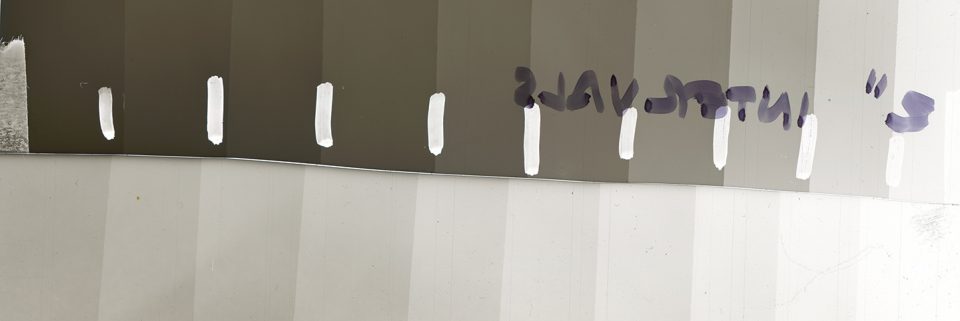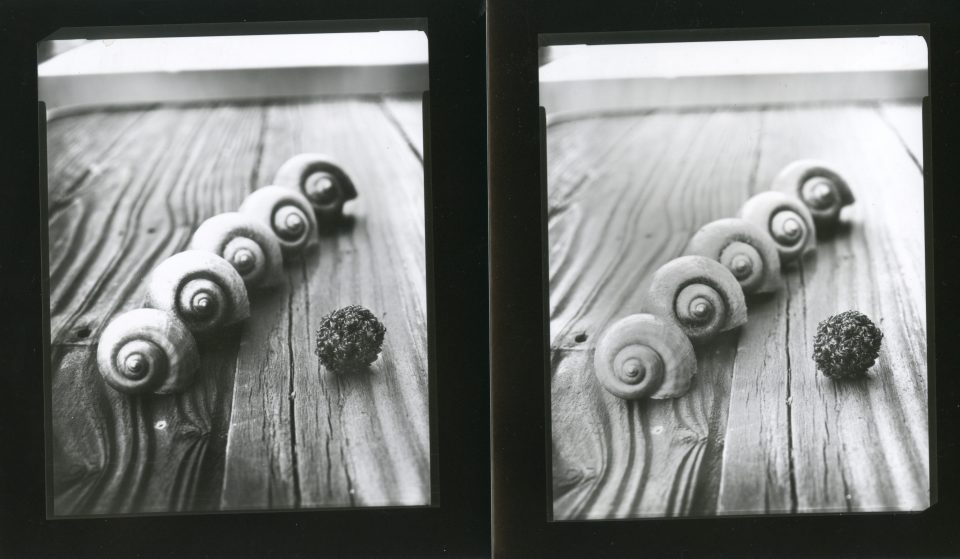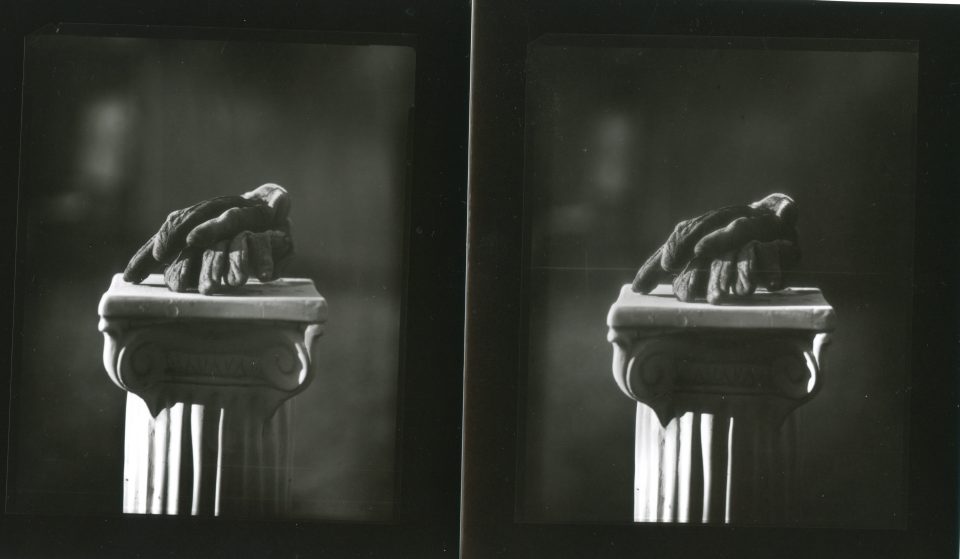I’d been thinking that I needed to complicate my life to rekindle my attraction to photography, and what better way than picking up a 4×5 camera, finding a film that is cheap and, more than anything, has very little technical data published anywhere on the internet?
Enter FreeStyle’s Arista Ortho Litho 3.0, an orthochromatic technical film (note 1) which, I assumed, could be exposed for continuous tone and processed in Rodinal, as I have done with Tri-X Ortho and Kodak Technical Pan in the past.
My first tests showed contrast, but some mid-tone. I exposed at ISO6, and processed by inspection, diluting Rodinal to roughly 1+150 (3ml/L), for 5 minutes. Subsequently, I read THIS article which suggested flashing the film, which is not something I have done much of. The idea behind flashing or pre-exposing film is that you deliberately fog the film, essentially pulling up the base exposure to just before it would otherwise start to show tone. In a digital world, it’s like calibrating, or changing a threshold. I set my enlarger to its highest position, and closed the lens to its smallest aperture, took one sheet that was undersized and cut it in half, flipping one half upside-down. I then marked intervals with a marker, and made 2″ steps. I found that flashing the film from behind gave me a little more resolution to my exposure, so I went with 3″. The goal is to choose a time that does not expose a tone.

I then flashed 2 sheets, and loaded 2 darkslides with one standard and one flashed sheet each.

The above test was shot with the Nikkor W 135/5.6 for 40″ at f22. Though the film does show reasonable detail on its own, the flashing did contribute a significant amount of mid-tone and highlight detail. The contact prints were made at contrast 1.5, and I increased the exposure of the flashed neg from 30″ to 35″. The flashed negative could be printed well at a higher contrast.

Similarly, this other test was exposed the same, but with the Tele Xenar (in Compur Dial shutter) 270/5.5, at f5.5 for 1/10″. I may have under-exposed this negative by a stop, as I am still not 100% on how bellows compensation works with a telephoto lens and I exposed it per the meter. The increased highlight detail is still significant, and I am excited by the results.
Processing on both tests was 8 minutes, dilution of 3ml Rodinal per Litre of water at around 20c, as it is too warm for me to really control tray development. Agitation is reasonably constant in a tray.
Note 1: The film is manufactured in Belgium, probably by Agfa in Mortsel. I also have a hunch that the film is sold as Ultrafine Ortho Litho, though this is based on price and processing data, as I have not tried the latter. I also do not believe it to be the same film as Agfa Ortho, as the Massive Dev Chart suggests it can be exposed at ISO25, and processed in Rodinal 1+24 for a mere 4 minutes. I really ought to try this rating, before ruling it out. I think I only ever shot a couple of rolls of Agfa Ortho, and probably in the late 90s. I am surprised that Fotoimpex does not have a packaging of this film for sale.
